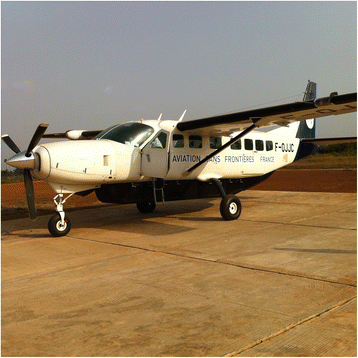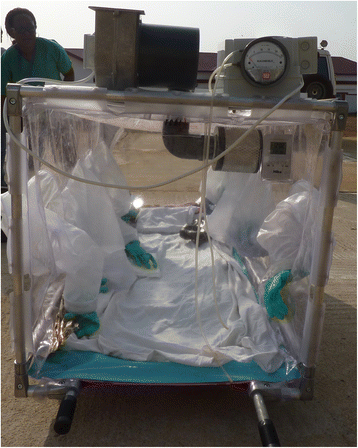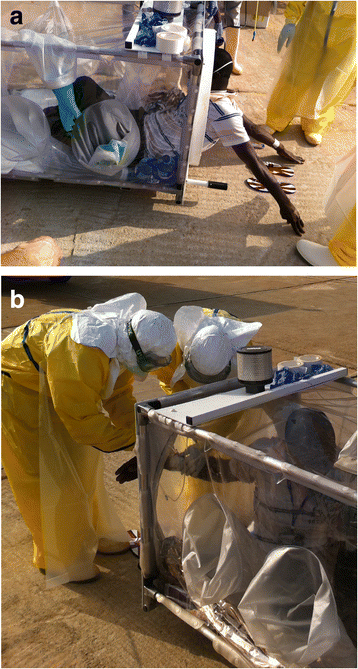Aerial medical evacuation of health workers with suspected Ebola virus disease in Guinea Conakry-interest of a negative pressure isolation pod-a case series
- PMID: 28284181
- PMCID: PMC5346232
- DOI: 10.1186/s12873-017-0121-x
Aerial medical evacuation of health workers with suspected Ebola virus disease in Guinea Conakry-interest of a negative pressure isolation pod-a case series
Abstract
We report 4 cases of Health Workers (HW) suspected of having contracted Ebola Virus Disease (EVD), transported from the Alliance for International Medical Action (ALIMA) Ebola Treatment Centre (ETC) in N'Zerekore, Guinea to the Treatment Centre for Carers run by the medical corps of the French army in Conakry, the capital of Guinea, which was established on 17 January 2015 and closed on 7 July 2015. In total more than 500 HWs have died from EVD since the epidemic began. This mortality has had significant effects on the ability of local services to respond appropriately to the disaster. The HWs were transported by air in the "Human Stretcher Transit Isolator-Total Containment (Oxford) Limited" (HSTI-TCOL) negative pressure isolation pod. Medical evacuation of patients with suspected, potentially fatal, infectious diseases is feasible with the use of a light isolator for patients without critical dysfunctions.
Keywords: Air transit isolator; Ebola; Guinea; Haemorrhagic fever; Infection control; Transportation of patients.
Figures




References
-
- World Health Organisation. Ebola situation report. 28 October 2015. http://apps.who.int/ebola/current-situation/ebola-situation-report-28-oc.... Accessed 2 Nov 2015.
-
- World Health Organisation. Health Worker Ebola infections in Guinea, Liberia and Sierra Leone. A Preliminary Report. World Health Organisation 2015. http://www.who.int/hrh/documents/21may2015_web_final.pdf. Accessed 2 Nov 2015.
-
- World Health Organization . Clinical management of patients with viral hemorrhagic fever: a pocket guide for the front-line health worker. Geneva: World Health Organisation; 2014. pp. 1–113.
-
- Medecins Sans Frontieres . Filovirus Viral Haemorrhagic Fever Guideline. Barcelona: Medecins Sans Frontieres; 2014. pp. 1–157.
Publication types
MeSH terms
LinkOut - more resources
Full Text Sources
Other Literature Sources
Medical

